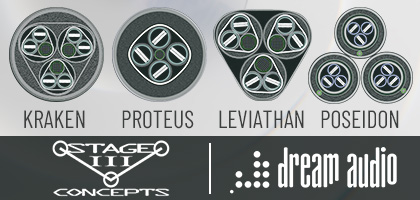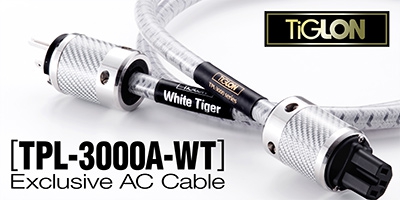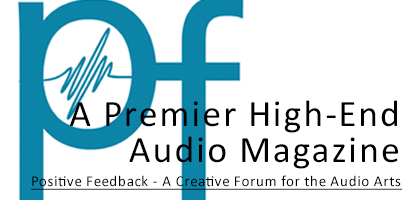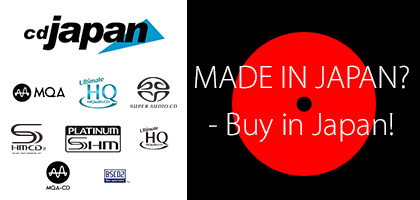 Contents
Contents
No. 257 October 2025
- COVER REVIEW: ANCIENT AUDIO Silver Grand Mono Mk II ⸜ power amplifier • monoblocks » POLAND • Kraków
- KRAKOW SONIC SOCIETY № 153: 30 years of ANCIENT AUDIO » POLAND • Kraków
- FEATURE ⸜ music & technology: HISAO NATSUME presents - In search for the lost great pianism Chopin tradition » part 2 (France) » JAPAN • Tokyo
- REVIEW: AUDIOPHONIQUE Classic AP 300D ⸜ power amplifier » POLAND • Pruszków
- REVIEW: AVATAR AUDIO Holophony No. 1 ⸜ loudspeakers • floor-standing » POLAND • Osowicze
- REVIEW: DIVALDI Gold PA One ⸜ integrated amplifier » POLAND • Kraków
- REVIEW: J.SIKORA Aspire ⸜ turntable (deck + tonearm) » POLAND • Lublin
- REVIEW: MB AUDIO CABLE Silver ⸜ analog interconnect ⸜ RCA » POLAND • Turza Śląska
- REVIEW: XACT N1 ⸜ LAN switch » POLAND • Wrocław

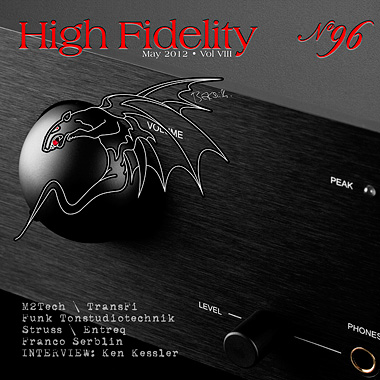
|
CONVERSATIONS VIII I don’t know how and when, yet three months have passed without our Conversations. It just so happened that I dedicated my last few editorials to topics that preoccupied me and that were, I believe, so important that it wouldn’t be right to try adding something more. In the meantime a lot of things piled up, usually minor but still interesting. It also happened that Conversations turned into some kind of blog – not really regularly updated, but still. Their main topic is my sound system. It needs to be said that the reviewer’s sound system, everything that relates to his professional life, that is all that shapes his work, becomes a part of every review and often decides about given reviewed product to be or not to be. I am no different. If you are told different, i.e. someone tells you that either nothing influences his/her decisions (work) or totally leaves out this aspect of review, its methodology, be assured that they are lying – either to themselves or to you. Ayon Audio Polaris III – Custom Version 
And there will be a good opportunity to verify that change for we have planned the July issue of HF to be fully dedicated to linear preamplifiers, those expensive and very expensive first of all. Here is what’s already confirmed: Base IV [Custom Version] – wooden shelves 
Some time ago I had a plan to remedy all this in one bold move and to buy the loaded finite elemente Reference Pagode Edition equipment rack. It has been a preferred choice of top audio reviewers as well as of Ken Ishiguro, the so much admired by me Acoustic Revive owner. You can read about his own sound system and its history in a very good reportage by Clement Perry, “Stereo Times” editor, HERE. In the meantime, however, Polish zloty took a dive against Western currencies and finite raised their prices at the same time so the idea lost its appeal to me. All the more so as the Base racks manufacturer contacted me with an offer to swap my granite shelves for wood. The wooden shelves are made of layers of HDF and plywood glued together, separated by a layer of special paper, imported from Japan. Since the shelves looked great I decided to swap my top and bottom shelves for wood and I left the middle granite. It is all good, really good! As you can see, Polish companies get better and offer more and more mature products, also from the sales point of view. 
Pro Audio Bono – rolling bearings instead of slide bearings 
The brass sleeves simply work and that’s it. However, changing a slide bearing used for mounting the support cables around a steel pin for a rolling bearing brought a significant change. Please, compare both designs and you will learn something – the sound with the rolling bearing is deeper, darker but also better defined; it is more velvety, as if there was less background noise. The difference is enough to quickly pick up which support board you prefer. It seems that mechanical vibrations are an equivalent of jitter in the digital signal, as far as their influence on sound is concerned. Proper damping, absorbing or draining off the vibrations has a direct influence on sound. Acoustic Revive Custom Series Loudspeaker Stands –Harbeth M40.1 stands (contribution to a topic) 
Given how much I value the company, appreciating their knowledge and attitude, I decided to order something similar for myself. It turned out not so easy – such custom order requires a long preparation, individual work, etc. I made it, however, thanks to help in negotiations from Mr. Yoshi Hontai, CEO of MuSon Project, Inc., and representative of such companies as jak Leben, Acoustic Revive, Acrolink, Oyaide, SPEC, SAEC, Musica and others, that we will come back to, outside Japan. The stands are astronomically expensive (their list price in the USA is $10,495!) but – oh well, for my dear Harbeths – everything! 
Since the stands are mechanical components, I started thinking what I could change to improve the sound. The first step was to pull out the underlying beautiful, large, Mr. Ishiguro signed anti-vibration platforms, custom made RST-38H. It was better. Next step was to pull out the four RIQ-5010 quartz insulators and using three wooden blocks instead. Better still. And finally out went the screwed-in support feet and I placed the stands on three Ceramic Discs from Franc Audio Accessories. Better again. By then I got back almost everything I’d had before with the Skyline stands, with much better selectivity and bass control. The Harbeths do not sound a little dim any more. Actually, that hadn’t bothered me until I heard them on AR stands. 
But I’m still troubled by all this – Acoustic Revive is an experienced company, Mr. Ken Ishiguro knows what he’s doing. Maybe it was me who made a mistake somewhere? 
|
Maybe I f…ed up something? It may be so. I’ll try to come back to my former setup and change only one component. I know that I’ll change the stock feet, most likely for anti-vibration Ceramic Disc Slim Foot from Franc Audio, but I’ll need to think of the best low cones for them. And I will also see what’s the deal with the quartz insulators and why wood “sounds” better. Maybe I needed to glue together the speakers with the quartz and the quartz with the stands with something like Blu-Tack? Maybe… Anyway, until I’m ready, until I get what I’ve hoped for (and the stands do have incredible potential) I will not put labels with the Acoustic Revive logo on them. I will surely let you know of any further advances. Made in Japan – the coming May issue of „High Fidelity” and MuSon Project’s role in this endeavor 
There’s no denying the fact that I fell under the Japanese charm. I’m not the first and not the last one, and audio is just one of many examples of the connection between Poland and Japan on some level. I know something about it – I live on the same side of the Vistula river as the Manggha Centre of Japanese Art and Technology… Maybe that is why the only continued special “High Fidelity” issues are the “Polish” September issue and the “Japanese” May issue (have a look for yourself in the archive). This Mortal Coil – newest box, Japanese pressing 
It is therefore worth noticing the new TMCBOX1 boxset with the albums of This Mortal Coil project (as it is difficult to speak of a “band”) that was issued on 26 October 2011. It contains four records, three “regular” albums and a fourth album compiling all the singles and other unreleased “bits and pieces”; the boxset is beautiful. The records are based on the 2010 re-master. What’s more important, they were HDCD encoded and the discs were pressed in Japan. I think the actual box is also Japanese made (I have some other similar boxsets – e.g. with mini-LP King Crimson albums – and they look very similar) although there is no information about that. The whole is rather expensive but if you enjoy this kind of music you will not find a better edition. Fidelio Musique MasterFlash FACD912 - We capture the feeling 
Besides jazz and classical tracks what we also get on the MasterFlash are non-musical tracks that we can use to test the quality of space reproduction in our systems. The material is available on CD, but the basic medium that can show the whole René’s mastery is MasterFlash, a kind of flash memory stick, a flat metal plate with flash memory and USB connector, holding 24/96 WAV files. I encourage you to get one, if only to see what the people from Fidelio Musique can do. ACT and Pirouet – new albums from Munich 
But they alone are not even what’s most interesting. For me even more exciting is the fact that ACT released vinyls. Together with CD versions I also bought vinyl records with the above mentioned albums by Landgren, Wollny, and Danielsson. I haven’t had time so far to listen to them so I don’t know how ACT recording engineers’ mastery sounds on vinyl. As you might know, ACT recording process is high res digital. It’s a shame that they don’t offer so far for sale any “Master” quality files. Tingvall Trio also issue their albums on vinyl but in their case it’s not the best transfer (pressing?) and I definitely prefer their albums on CD. 
But it’s not the only interesting recording company from Munich. In addition to the essential ECM I have recently reached some albums from Pirouet Records. Great music indeed! Unlike ACT or ECM the recording quality is not exemplary. But the music itself – go ahead and have a listen, it’s really worth it. 
High End, Munich – the show is coming very soon 
A few details: Wojciech Pacuła |
About Us |
We cooperate |
Patrons |
|
Our reviewers regularly contribute to “Enjoy the Music.com”, “Positive-Feedback.com”, “HiFiStatement.net” and “Hi-Fi Choice & Home Cinema. Edycja Polska” . "High Fidelity" is a monthly magazine dedicated to high quality sound. It has been published since May 1st, 2004. Up until October 2008, the magazine was called "High Fidelity OnLine", but since November 2008 it has been registered under the new title. "High Fidelity" is an online magazine, i.e. it is only published on the web. For the last few years it has been published both in Polish and in English. Thanks to our English section, the magazine has now a worldwide reach - statistics show that we have readers from almost every country in the world. Once a year, we prepare a printed edition of one of reviews published online. This unique, limited collector's edition is given to the visitors of the Audio Show in Warsaw, Poland, held in November of each year. For years, "High Fidelity" has been cooperating with other audio magazines, including “Enjoy the Music.com” and “Positive-Feedback.com” in the U.S. and “HiFiStatement.net” in Germany. Our reviews have also been published by “6moons.com”. You can contact any of our contributors by clicking his email address on our CONTACT page. |
 



|
   |
main page | archive | contact | kts
© 2009 HighFidelity, design by PikselStudio,
projektowanie stron www: Indecity



